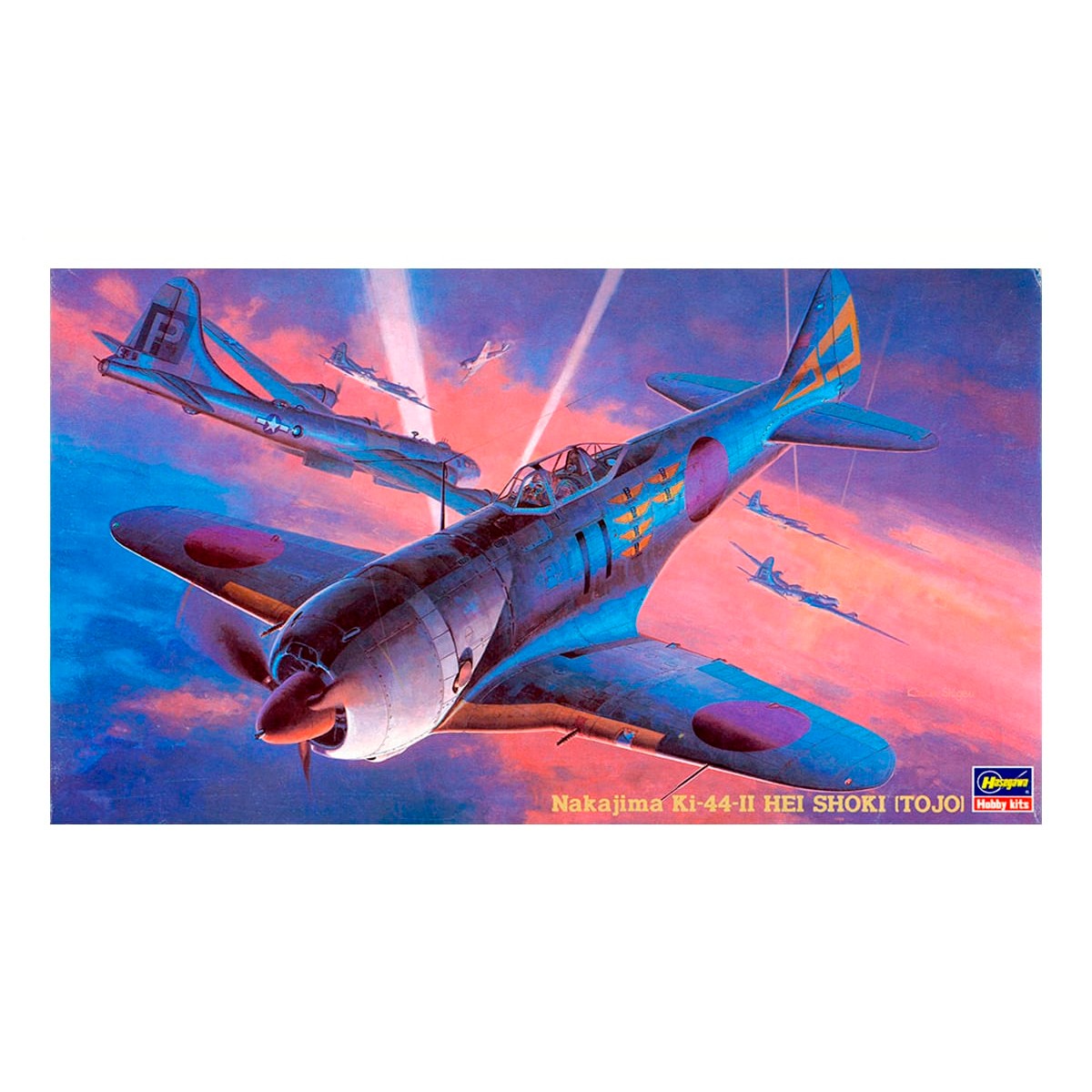JT36 – 1/48 NAKAJIMA Ki-44-II HEI SHOKI (TOJO)
22,50€
Out of stock

*Please check our Privacy Policies to see how to we use your personal data.
*Por favor revisa nuestra Política de Privacidad para ver como tratamos tus datos personales
Scale … 1:48
Part number ……… JT36
In 1938, when the military ideology shifted from light fighter fighting to high-speed hit-and-run tactics, the Army emphasized speed, climbing power, and dive performance at about the same time as the announcement of the prototype of the light warfare key-43.
We have issued an instruction to Nakajima to make a prototype of the high-speed heavy fighter Ki-44.
To satisfy the Army request in Nakajima is larger in diameter chosen large output of the engine, determining, in Ha -41 with a maximum output at that time thereby nose becomes thicker digit the wing area for the main wing speed It has been made smaller on the outskirts, and a butterfly-shaped flap unique to Nakajima has been adopted on the trailing edge of the main wing to improve performance during air combat and takeoff and landing.
As a result of the test, the pilot who was accustomed to the Nakajima Ki-27 fighter was not well-received because of poor visibility during takeoff and landing and poor stability at low speed .
However, in terms of performance comparison with the Bf-109E and Kawasaki Ki-60, the Ki-44 was superior, so it was officially adopted as a two-type single-seat fighter in 1945, and was later commonly known as “Zhong Kui”.
The aircraft equipped with Ha-41 is distinguished from the Nakajima Ki-44 fighter type 1, and the aircraft equipped with the more powerful engine Ha-109 is distinguished from the Nakajima Ki-44 fighter type 2.
In addition, there are insteps, seconds, and second types depending on the weapons and equipment of the second type, and 1,227 aircraft were produced for each type between 1945 and 1945, and they were active in intercepting enemy bombers for air defense missions.
《Data》 Type 2 single-seat fighter Type 2 B
crew: 1 person
Overall width: 9.448m Overall
length: 8.843m
Overall height: 3.248m (horizontal) Total
weight: 2,764kg
Maximum speed: 605km / h Altitude 5,200m
Cruising speed: 400km / h Altitude 4,000m
Engine: Ha-109
Lifting output: 1,520hp
Armed: 12.7mm cannon x 2 (body), 40mm cannon x 2 (main wing), bomb 30kg-100kg x 2
Escala … 1:48
Número de pieza ……… JT36
En 1938, cuando la ideología militar pasó de la lucha de cazas ligeros a las tácticas de golpe y fuga de alta velocidad, el Ejército enfatizó la velocidad, la potencia de escalada y el rendimiento en picado casi al mismo tiempo que el anuncio del prototipo de la llave de guerra ligera. -43.
Hemos enviado una instrucción a Nakajima para que haga un prototipo del caza pesado de alta velocidad Ki-44.
Para satisfacer la solicitud del Ejército en Nakajima, se eligió un diámetro más grande de gran potencia del motor, determinando, en Ha -41 con una potencia máxima en ese momento, por lo que la nariz se vuelve más gruesa y el área del ala para la velocidad del ala principal se ha hecho más pequeña en las afueras, y se ha adoptado una aleta en forma de mariposa exclusiva de Nakajima en el borde de fuga del ala principal para mejorar el rendimiento durante el combate aéreo y el despegue y aterrizaje.
Como resultado de la prueba, el piloto que estaba acostumbrado al caza Nakajima Ki-27 no fue bien recibido debido a la poca visibilidad durante el despegue y el aterrizaje y la poca estabilidad a baja velocidad.
Sin embargo, en términos de comparación de rendimiento con el Bf-109E y el Kawasaki Ki-60, el Ki-44 fue superior, por lo que fue adoptado oficialmente como un caza monoplaza de dos tipos en 1945, y más tarde fue conocido comúnmente como “Zhong Kui “.
El avión equipado con Ha-41 se distingue del caza Nakajima Ki-44 tipo 1, y el avión equipado con el motor más potente Ha-109 se distingue del caza Nakajima Ki-44 tipo 2.
Además, hay empeines, segundos y segundos tipos dependiendo de las armas y equipos del segundo tipo, y se produjeron 1.227 aviones para cada tipo entre 1945 y 1945, y estuvieron activos en la interceptación de bombarderos enemigos para misiones de defensa aérea.
《Datos》 Caza monoplaza tipo 2 Tipo 2 B
tripulación: 1 persona
Ancho total: 9.448 m en total
longitud: 8.843m
Altura total: 3,248 m (horizontal) Total
peso: 2.764kg
Velocidad máxima: 605 km / h Altitud 5200 m
Velocidad de crucero: 400 km / h Altitud 4.000 m
Motor: Ha-109
Potencia de elevación: 1.520 CV
Armado: cañón de 12,7 mm x 2 (cuerpo), cañón de 40 mm x 2 (ala principal), bomba de 30 kg-100 kg x 2





 Request of SDS product data file / Product security
Request of SDS product data file / Product security